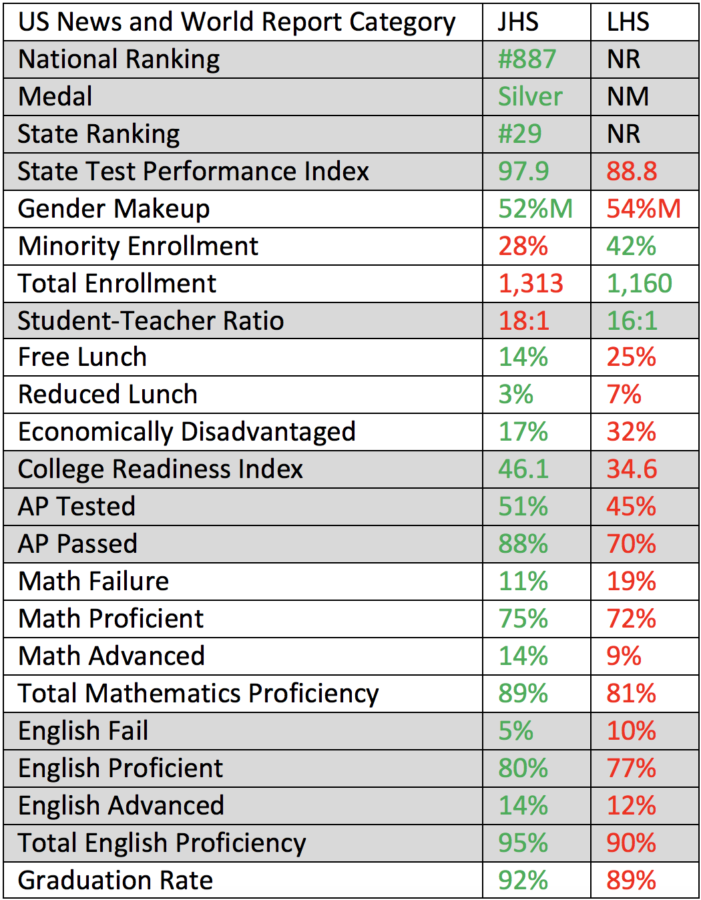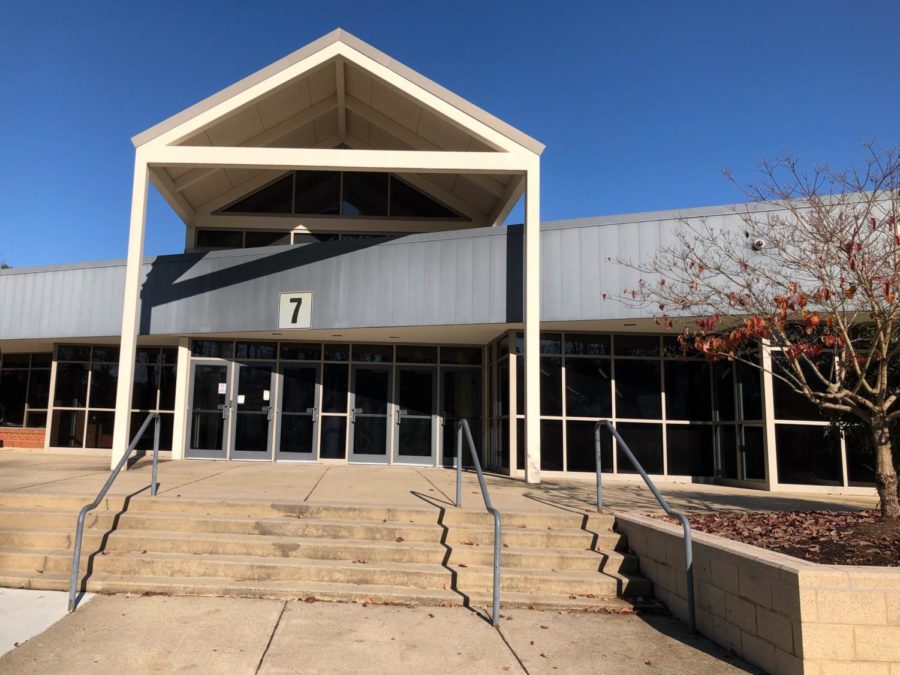Disparities Between Lafayette and Jamestown Clear
LHS makes the most of its disadvantages
Students who can look past Lafayette’s slightly dingy exterior will find a supportive, close-knit community.
The students, staff, and families of Lafayette High School have always had a chip on their shoulder. It’s widely suspected that Lafayette’s rival, Jamestown High School, receives more money, resources, and attention.
From a socioeconomic standpoint, it’s no surprise that Jamestown is perceived as the superior school. According to the US News and World Report, 17% of students at Jamestown qualify for free lunch, compared to 32% at Lafayette. This is one reason for Lafayette’s lack of funds— parents don’t have as much money to give. 28% of Jamestown students and 42% of Lafayette students belong to racial or ethnic minorities, another side effect of WJCC districting that the school board may soon change.
It’s often said that the rich get richer; this adage rings true for Jamestown. Because JHS families have more money, they can donate more to make their school perform better academically, and better academic performance leads to more recognition and funding. 20 AP classes are offered on site at Jamestown, compared to Lafayette’s 14. Many students at Lafayette looking for advanced coursework are bused to Jamestown every morning. Jamestown scores higher than Lafayette on state tests and AP exams. Within the past 2 years, 23 Jamestown students have been commended in the National Merit Scholar program, compared to Lafayette’s 10. Fewer students at Jamestown fail math and English classes, and more students are in advanced classes. Class sizes at the two schools are about the same. So are graduation rates, but Jamestown sends more students to four-year colleges.
In years past, Lafayette has answered Jamestown’s academic excellence with athletic excellence. Staff members embrace Ram sports, as teams encourage school spirit and bonding, but some see the darker side of the “sports school” archetype. “We’re a school with a team, not a team with a school,” says Physics and Trig teacher Mark Weideman.
Although Lafayette often touts its athletic superiority, it may not be able to do so for long. Last year, Jamestown won the coveted Virginia High School League Wells Fargo Cup, awarded to the 4A school with the most successful sports program. Lafayette finished 19th after holding the title for two years straight.
Teachers say that Lafayette has more available technology than Jamestown. “It’s a lot easier for me to reserve laptops at Lafayette,” said English teacher Valerie Smith. As for basic resources like novels for English classes, Jamestown is clearly better off. Most textbooks at LHS are painfully outdated— the ones used in Biology were published in 1997. “The textbooks I’ve seen [at Jamestown] are newer and nicer,” says senior Eric Stump, who attends both schools daily.
Fickle copy machines draw the biggest complaints from teachers at Lafayette. Mrs. Smith says that malfunctioning copiers were a problem at Jamestown “once… but they were fixed pretty quickly.” At Lafayette, they “seem to always be broken,” so she and other teachers have found ways to adapt. Many classes use laptops (despite students’ complaints of slowness) and iPads when copiers are down.
Although both schools are in the WJCC system, the cultures at Jamestown and Lafayette are markedly different. JHS sophomore Avery Quarles, who has attended both schools, “noticed that [Jamestown takes] certain things like rules more seriously.” Most students and teachers say that the environment at Lafayette is warmer; perhaps the school’s shortcomings have created a stronger community.
Mrs. Smith, who spent seven years at Jamestown before transferring to Lafayette this fall, says that teachers are more willing to help one another at LHS. “We bond together really well,” she says. “It’s very much a part of the culture here.” German teacher Karin Woodrum, who works at both schools, adds that these close-knit friendships can feel insular. She calls the environment at Jamestown “open, inviting, and inclusive.” “I enjoy working at JHS,” she writes. “Administration and teachers [there] are very welcoming.” At Lafayette, “the groups of teachers seem more defined.”
Lafayette students and teachers tend to have a positive outlook despite their disadvantages. Workers in the back of the school are building the auxiliary gym that student-athletes have lacked for years, a sign that Lafayette may finally be catching up to its rival. Although opinions of the school may differ, everyone at LHS seems to agree on one point— as Mr. Weideman puts it, “Lafayette does more with less.”






Bob Jone • Jan 5, 2018 at 10:18 AM
It think it is sad to put your school’s short fall on ethnic minorities. There was no need to present it in your information. It was not relative to your argument-unless you put blame on them.
Every staff member and student has an opportunity to learn. The problem is, the blame is put elsewhere rather than looking at yourself. The short fall of academics is on the students. Resources help, but you have 10 NMSP, meaning there is enough support. Your articles are filled with so many excuses and finger pointing. How about owning what you are and try to change from within.